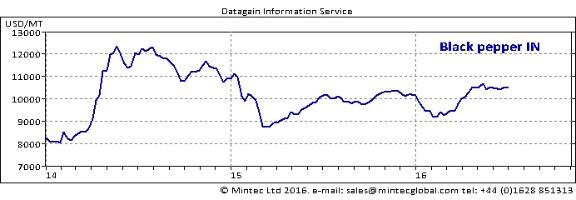The roti—or Indian flatbread—is among a number of breads that can be made from ingredients developed by the multinational’s health and nutrition division, which includes bakery enzymes, emulsifiers and hydrocolloids to improve the textural properties of ready-to-eat flatbreads.
DuPont said that the new concept of a wholewheat packaged roti was inspired by the growing need for convenience foods by Indian households that are in semi-cooked or ready-to-eat formats with home-cooked freshness and taste.
“In this fast-paced world with changing consumer trends, there is an increased need to change the way rotis are made. We have put in years of research to develop products that would transform the way rotis are produced, consumed and distributed,” said Parth Patel, DuPont’s divisional business head for South Asia.
The ingredient range was developed in Denmark, at DuPont’s largest research and development centre, which had been exploring fundamental mechanisms and flour components that contribute to flatbread quality.
The findings shed new light on the effects of functional ingredients in roti recipes including soy proteins, allowing researchers to develop a range of fresh-keeping solutions to improve softness, taste and shelf-life of this Indian staple.
DuPont said that its ingredients can give rotis a stay-fresh feel and lasting flexibility with no dry edges. Manufacturers can also improve their nutritional profile by fortify the rotis with DuPont’s range of functional soy protein to cater for the needs of the majority of Indians who are vegetarian.
More stories from South Asia…
42.5% of residents in India’s capital are diabetic, study reveals
More than two in five of Delhi residents are diabetic, a study has found, placing India’s capital just ahead of Mumbai, where 38.5% of the population suffer from the condition.

According to an Assocham report, Delhi and Mumbai are followed by fellow metro cities Ahmedabad, Bengaluru and Chennai, and a further 125m Indians are expected to contract the condition by 2035 if lifestyle habits, as well as food consumption patterns, do not change.
Even in rural areas, people are increasingly becoming patients of diabetes, said the study, which forms the start of a CSR initiative by the apex industry body to raise awareness of the condition.
“Diabetes today is one of the biggest health threats to our country and immediate steps are needed to contain its spread. Our research has found that people procrastinate taking a screening test in the absence of any immediate symptoms of the disease,” said DS Rawat, secretary-general of Assocham.
According to the study, which monitored around 500 residents in each city it covered, a tendency by Delhiites to consume high amounts of oil, ghee and butter in their cooking has led to increased obesity and hypertension, and given rise to an estimated diabetic population of 42.5%.
The findings also reveal that diabetes among men has increased by 25% while among women, it has shot up to 42%. An estimated 85m people in India currently suffer from pre-diabetes, the study revealed.
Greiner signs joint-venture in India as it pursues eastward expansion
European packaging major Greiner Packaging will expand in India after forming a joint-venture with local partner Century Ultrapack, one the leading providers of plastic packaging to the Indian dairy industry.

Delhi-based Century Ultrapack, which was established in 1980, supplies the likes of Mother Dairy, Amul and PepsiCo in the north of India. Its portfolio includes more than 250 packaging product lines, mostly for milk and ice cream.
The new venture, Greiner Packaging India, follows the company’s recent move into Turkey as it pursues more Asian markets as part of a medium-term strategy.
“We see a very high development and growth potential in India, where food packaging is concerned. It is important for us to take a leading role early on in the region," said Axel Kühner, chairman of Greiner Group.
“This expansion allows us to systematically pursue our globalisation strategy and gives us even more opportunities to respond to the wishes of customers from abroad.”
Through the joint venture, the company hopes to supply large multinational customers in India for the first time. In the first year, investments will be made in a significant expansion of production capacities using Greiner’s western technology.
Commodity update: Indian pepper prices continue to surge
Indian pepper prices have surged in recent months, up 13% since the beginning of February and 7% since the start of the year.

According to Mintec, the commodities analyst, prices have risen due to lower production this year following dry weather conditions caused by an erratic monsoon in 2015.
This year’s production is now likely to come in at 50,000 tonnes, down from the 75,000 tonnes produced last year.
Low pepper inventories and expectations of very limited carryover stocks are among the other factors supporting current high prices.
The recent increase in Indian prices has also had an impact on prices for Vietnamese pepper as farmers there are not willing to sell their stocks in the hope of increasing revenues. Pepper prices in Vietnam have strengthened 12% since mid-May.
